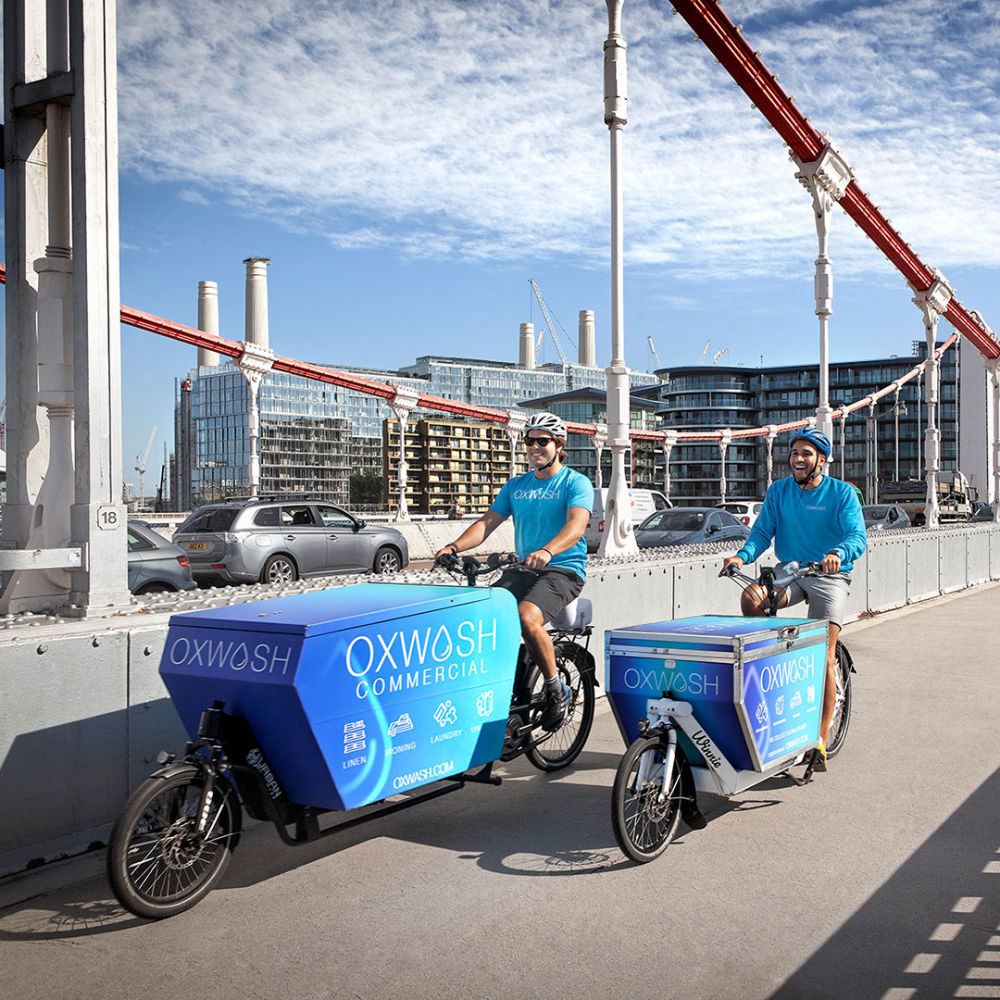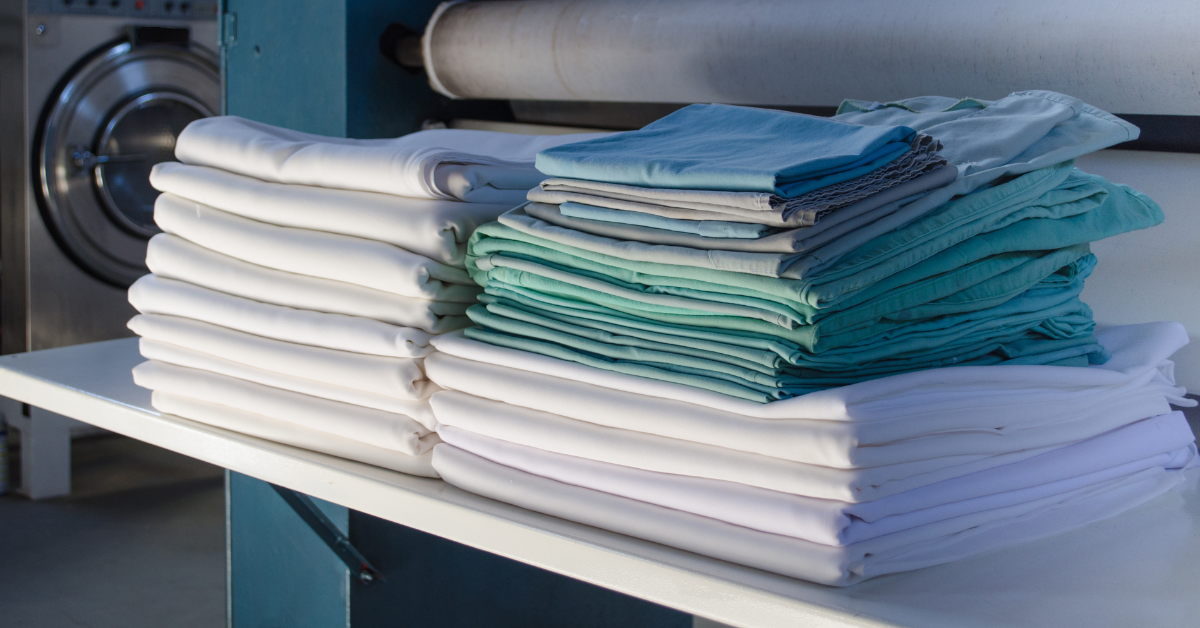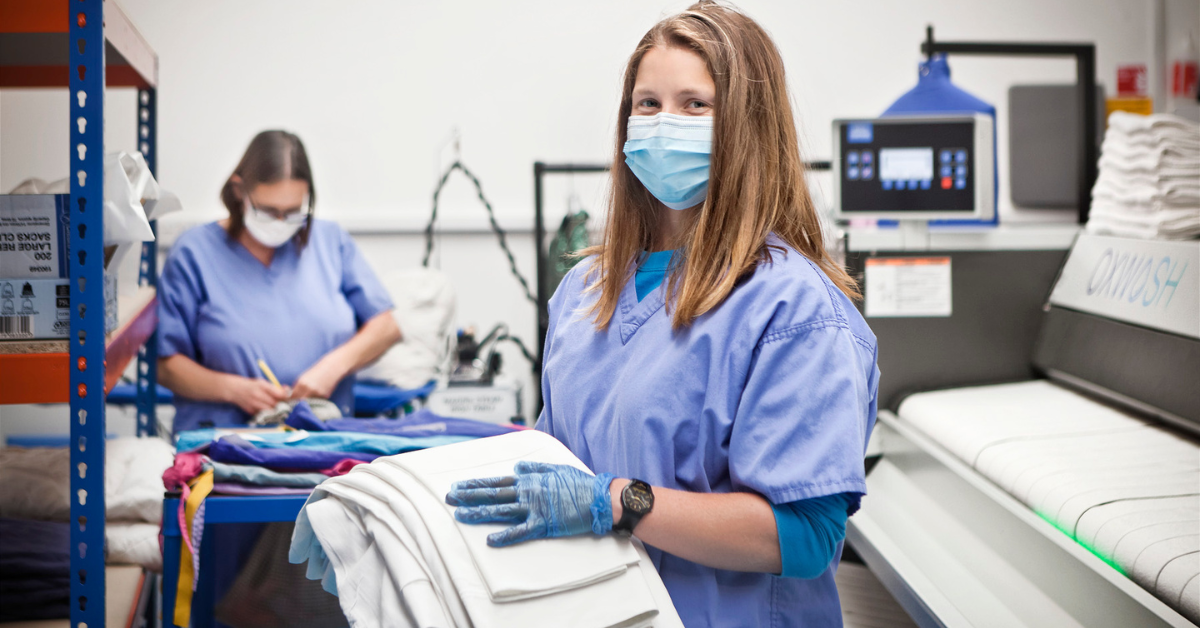How to Reduce Your Business' Laundry Carbon Footprint


Business & Insights
Healthcare
Sustainability
In the quest for a more sustainable business model, it's essential to scrutinise every aspect of operations, including laundry practices. Whether you operate a hotel, restaurant, or corporate facility, the environmental impact of your laundry activities can be significant.
This blog will delve into practical strategies for businesses looking to minimise their laundry-related carbon footprint, with a special emphasis on the role of sustainable laundry services.
Optimise washing temperatures
One of the simplest yet most impactful ways to reduce your business's laundry carbon footprint is by optimising washing temperatures. Traditional hot-water washing not only consumes more energy but also contributes to higher carbon emissions.
By embracing cold-water washing, you can maintain cleanliness while drastically cutting down on energy consumption. However, you have to take into account the recommendations of organisations like the Health & Safety Executive when deviating from their standards. Take advice from experts and speak to laundry service companies.
Upgrade to high-efficiency machines
Investing in high-efficiency washing machines and dryers is a key step towards sustainable laundry practices. These machines are designed to use less water and energy without compromising on performance.
Although the initial investment may seem significant, the long-term benefits in terms of environmental conservation and cost savings make it a worthwhile consideration.
Load smarter for efficiency
Efficient loading of laundry machines is crucial for reducing energy and water consumption. Overloading machines can lead to longer washing times and decreased efficiency, while washing smaller loads wastes resources. Striking the right balance in load size ensures optimal performance and resource conservation.
Choose detergents wisely
While cleanliness is non-negotiable, the choice of detergents can impact your business's environmental footprint. Opt for detergents that are phosphate-free, biodegradable, and have minimal packaging. This not only aligns with sustainable practices but also contributes to a healthier laundry ecosystem.
At Oxwash, we avoid the use of chemicals like Perc completely, and opt for less environmentally damaging methods of cleaning, such as Ozone cleaning. It was pivotal in allowing us to help numerous healthcare facilities during COVID-19, and we still use this method today.
Implement regular maintenance
Regular maintenance of laundry equipment often takes a back seat but is crucial for sustainable operations. Well-maintained machines perform more efficiently, reducing the need for excess water and energy. Establishing routine checks and maintenance schedules can prolong the lifespan of your laundry equipment.
Introduce linen reuse programs
Especially relevant in hospitality and healthcare sectors, where linens undergo frequent replacements, linen reuse programs can significantly cut down on laundry demands. Extending the lifespan of towels, bed linens, and uniforms through proper laundering reduces the frequency of replacements and, consequently, the associated carbon footprint. It’s better to reuse than to replace.
Invest in renewable energy
For businesses committed to reducing their carbon footprint, transitioning to renewable energy sources is a transformative step. Solar panels, wind turbines, or other sustainable energy options can power your laundry facility, aligning your operations with a cleaner and more sustainable future.
Our laundry facility in Swindon, Big Blue I, is the world’s first industrial sized laundry and wet cleaning facility powered entirely by renewable energy. Companies can benefit from outsourced carbon-neutral operations, and count the emissions saved as their own and reduce your business’ requirement for offsetting initiatives.
Explore sustainable laundry services
Embracing the services of sustainable laundry providers is a progressive move for businesses looking to amplify their environmental efforts. These services often utilise advanced technologies and practices to minimise water and energy consumption. Outsourcing laundry to a service committed to sustainability can be a strategic decision for businesses aiming to reduce their overall carbon footprint.
Adopting sustainable laundry practices is not only a responsible environmental choice but also a sound business decision. The strategies outlined above can significantly contribute to lowering your business's laundry-related carbon footprint. Whether optimising washing temperatures, upgrading equipment, or considering sustainable laundry services, each step plays a crucial role in building a more sustainable and responsible future for your business.
Looking to Reduce your Carbon Footprint?


Related Articles


B Corp™ certified.


Surpassing NHS-grade disinfection.













